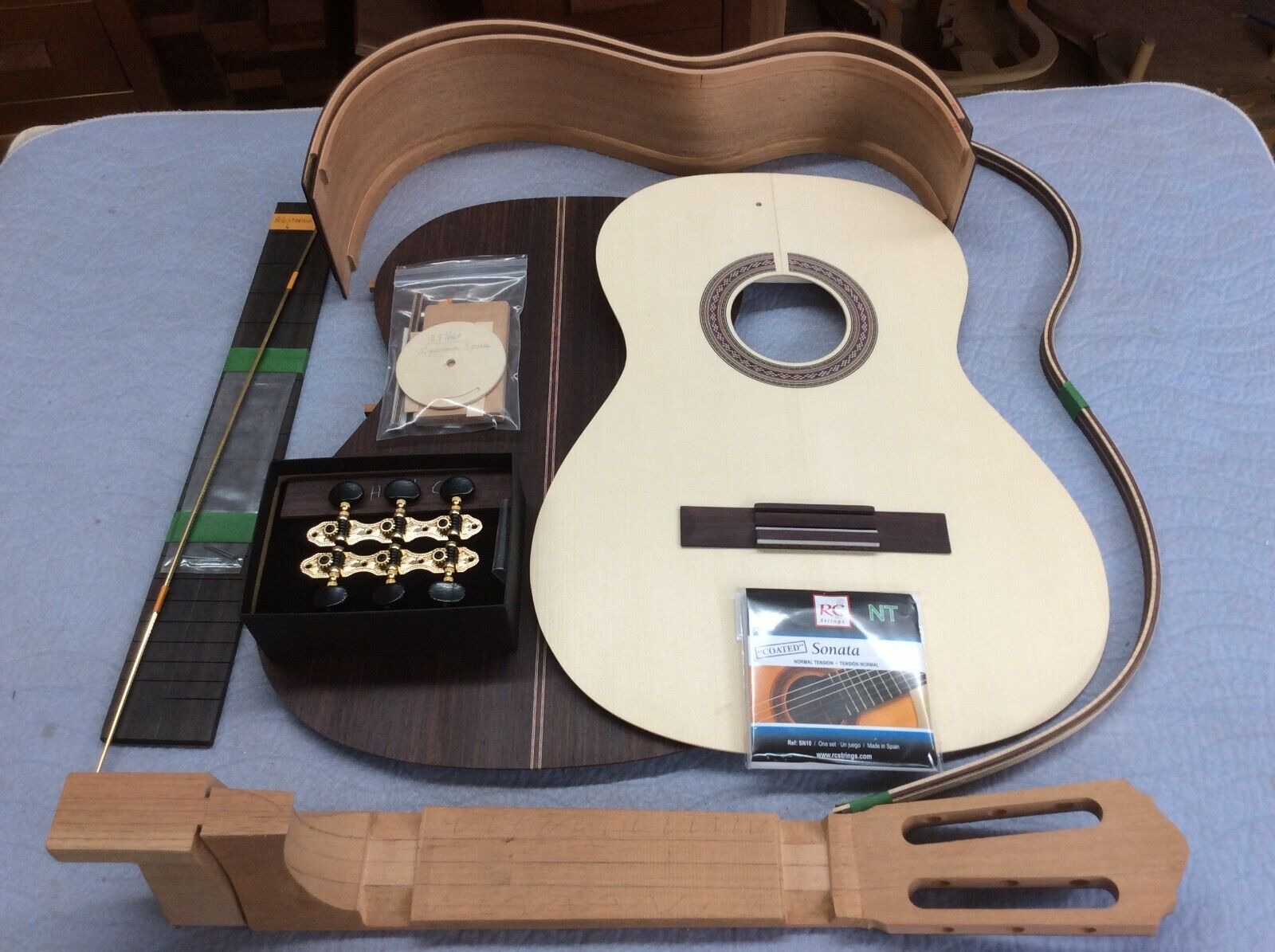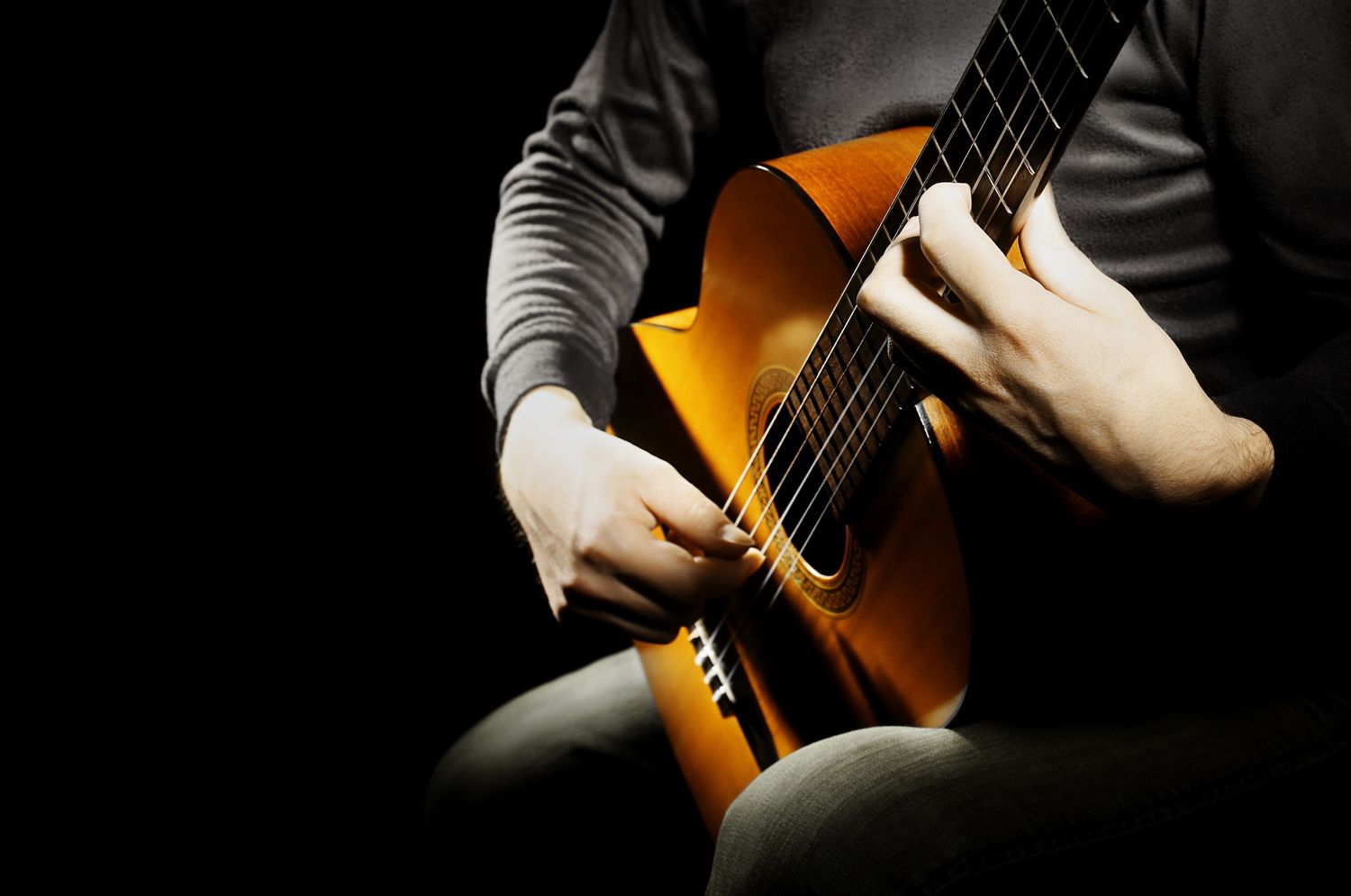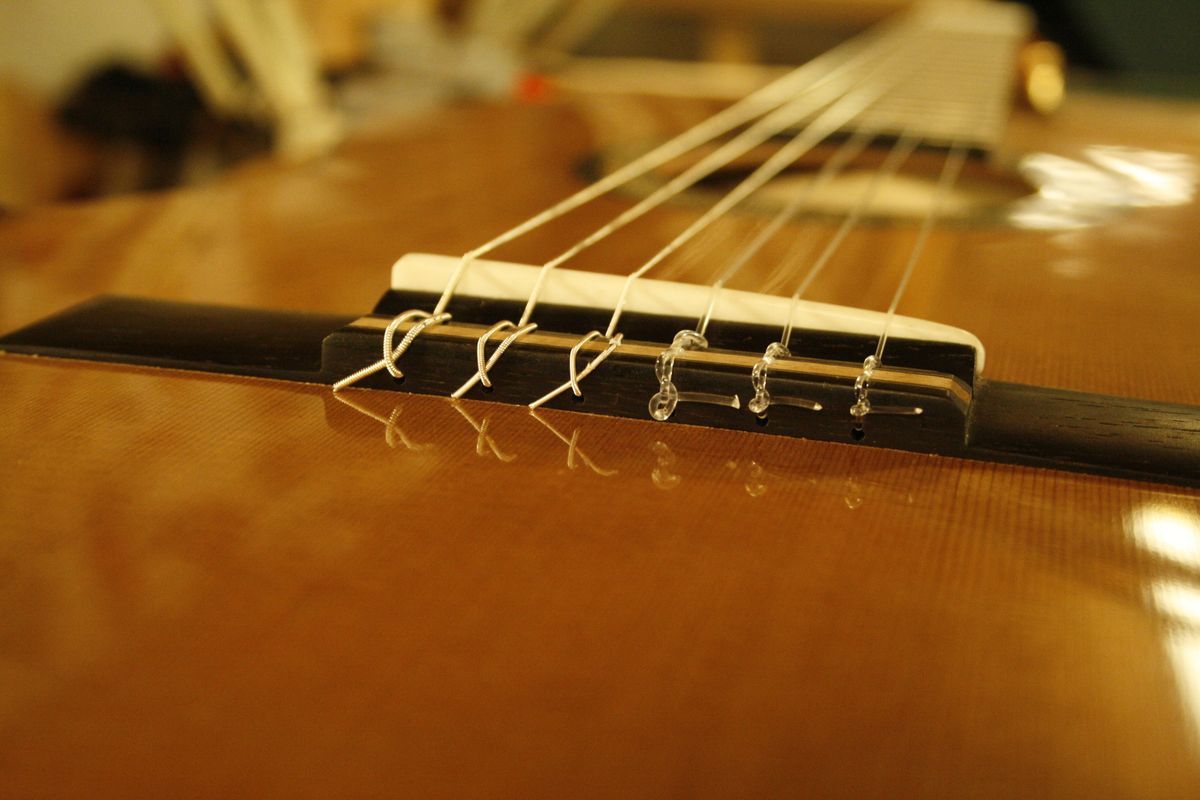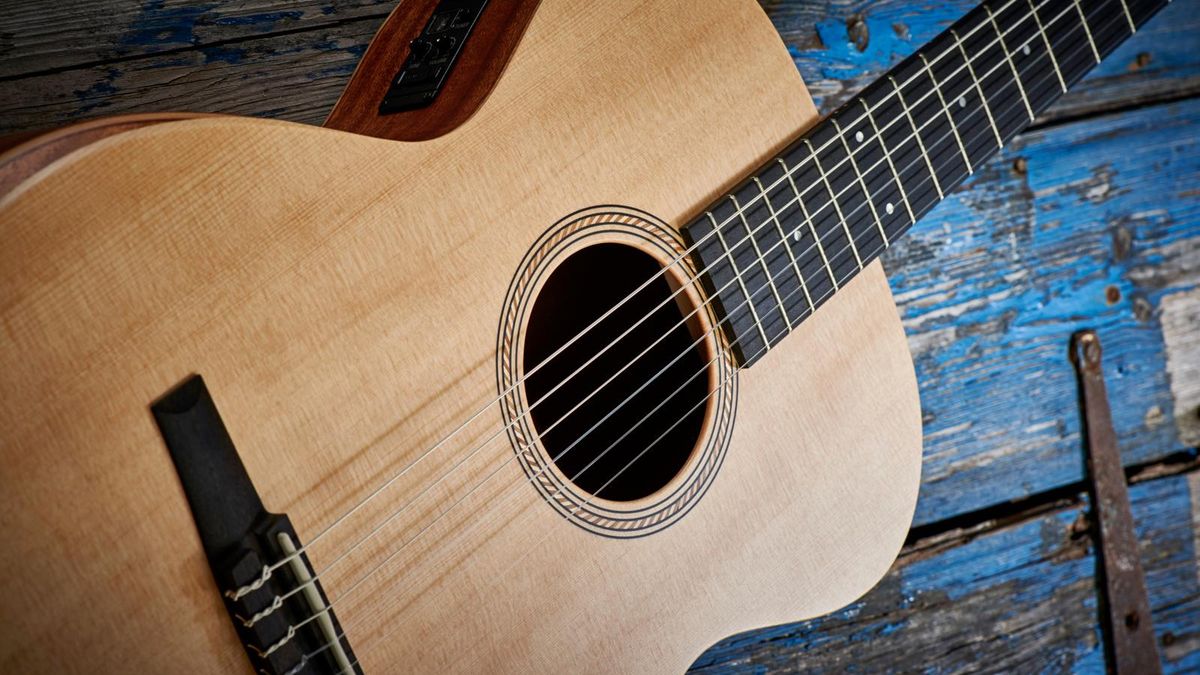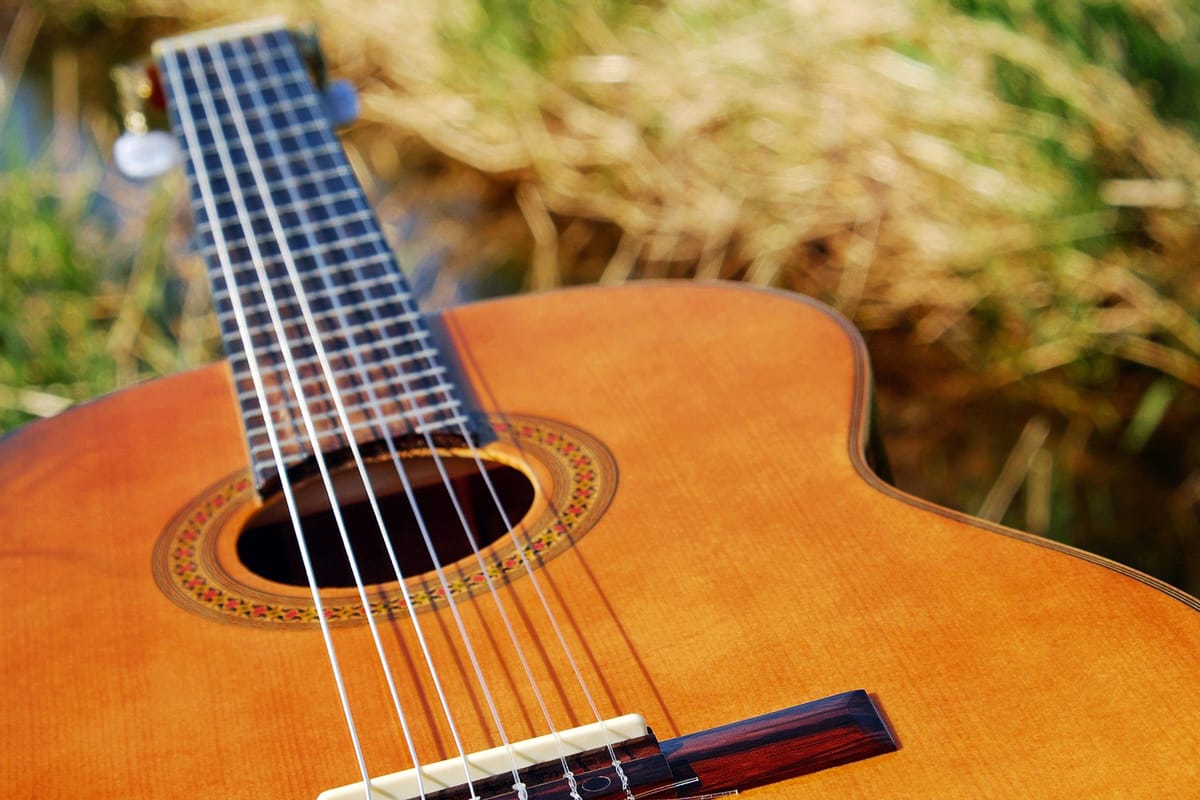

Classical
How To Choose A Classical Guitar
Modified: January 22, 2024
Learn how to choose the perfect classical guitar with our comprehensive guide. From materials to sound quality, we cover everything you need to know.
(Many of the links in this article redirect to a specific reviewed product. Your purchase of these products through affiliate links helps to generate commission for AudioLover.com, at no extra cost. Learn more)
Table of Contents
- Introduction
- Understanding the Different Parts of a Classical Guitar
- Choosing the Right Body Style
- Selecting the Wood
- Considering the Guitar’s Construction
- Examining the Sound and Tone
- Assessing the Playability and Comfort
- Determining the Right Size
- Setting a Budget
- Testing and Comparing Guitars
- Seeking Expert Advice
- Making the Final Decision
Introduction
Choosing a classical guitar can be an exciting and rewarding experience for both beginners and experienced guitarists. A classical guitar, with its beautiful tone and rich history, is a versatile instrument that can be used for various styles of music. Whether you’re a classical musician, a flamenco enthusiast, or simply someone looking to explore the world of guitar playing, finding the right instrument is essential.
With so many options available on the market, it can be overwhelming to know where to begin. That’s why this guide will help you navigate the process of choosing a classical guitar. We’ll explore the different parts of a classical guitar, the various body styles and woods to consider, and factors such as construction, sound, playability, and size.
Understanding these key aspects will equip you with the knowledge needed to make an informed decision and find the perfect instrument that suits your individual needs and preferences.
Whether you’re a beginner searching for your first classical guitar or a seasoned player looking to upgrade, this guide will assist you in selecting a guitar that will inspire and enhance your musical journey.
Understanding the Different Parts of a Classical Guitar
Before diving into the process of choosing a classical guitar, it’s essential to have a basic understanding of its different parts. Familiarizing yourself with these components will not only help you have more informed conversations with guitar experts but also enable you to evaluate the quality and craftsmanship of the instruments you come across.
Here are the key parts of a classical guitar:
- Headstock: The headstock is located at the top of the guitar and holds the tuning pegs. It’s responsible for maintaining the tension of the strings.
- Tuning Pegs: The tuning pegs, also known as machine heads, are used to adjust the tension of the strings, thereby altering their pitch. They are typically located on the headstock.
- Nut: The nut is a small strip, usually made of bone or synthetic material, located at the top of the fingerboard. It supports the strings, ensuring they are elevated at the proper height.
- Fingerboard: Also known as the fretboard, the fingerboard is a flat, usually wooden, surface that runs along the neck of the guitar. It features metal frets that divide the fingerboard into different segments, allowing the player to change the pitch of the strings by pressing them against the frets.
- Neck: The neck is the long, slender portion of the guitar that connects the body to the headstock. It provides stability and supports the fingerboard and frets.
- Body: The body is the largest part of the guitar and is typically made of wood. It consists of a soundboard (top), back, and sides. The body shape and size have a significant impact on the guitar’s overall sound and tone.
- Soundhole: Located on the soundboard, the soundhole allows the sound produced by the strings to resonate and project outward, creating the guitar’s acoustic sound.
- Saddle: The saddle is a small, usually bone or synthetic material, strip located on the bridge. It acts as a contact point for the strings and transfers their vibrations to the soundboard.
- Bridge: The bridge is a wooden or synthetic component that anchors the strings to the body of the guitar. It transmits the vibrations from the strings to the soundboard, contributing to the overall tone and volume.
- Strings: Classical guitars typically have six strings, made of nylon or other synthetic materials. The strings produce sound when plucked or strummed and are essential for creating melodies and chords.
By understanding these various parts, you’ll be able to communicate effectively with guitar experts and make more informed decisions when selecting a classical guitar that suits your needs and preferences.
Choosing the Right Body Style
The body style of a classical guitar not only affects its appearance but also has a significant impact on its sound and playability. There are three primary body styles to consider: the classical, flamenco, and crossover.
Classical: The classical body style is the most traditional and widely recognized. It has a wide, rounded lower bout and a narrower waist, resulting in a balanced sound with warm bass and clear trebles. Classical guitars are known for their versatility and are suitable for a wide range of musical genres.
Flamenco: Flamenco guitars are specifically designed for the flamenco style of music. They typically have a slightly shallower body depth and a lower action, allowing for quick and percussive playing techniques. Flamenco guitars produce a bright and percussive sound, emphasizing the treble frequencies.
Crossover: Crossover guitars are a hybrid of classical and steel-string acoustic guitars. They feature a narrower neck and a slightly smaller body size, making them more comfortable for guitarists transitioning from steel-string acoustic guitars. Crossover guitars offer a balance between the traditional nylon-string sound and the playability of a steel-string guitar.
When choosing a body style, consider the type of music you’ll be playing and the sound you prefer. Classical body styles are versatile and suitable for various genres, while flamenco guitars are ideal for those focusing on flamenco music. Crossover guitars offer a unique blend of characteristics for guitarists looking for a different playing experience.
It’s worth noting that personal preference plays a significant role in selecting the right body style. If possible, try out different body styles to see which one feels the most comfortable and produces the desired sound for your playing style.
Next, let’s delve into the importance of selecting the right wood for your classical guitar.
Selecting the Wood
The choice of wood used in a classical guitar has a profound impact on its tone, resonance, and overall character. Different types of wood offer unique sonic qualities and aesthetic appeal. When selecting a classical guitar, it is crucial to understand the characteristics of the various woods used in its construction.
Soundboard (Top): The soundboard is one of the most crucial components of a classical guitar. The wood used for the soundboard has a significant influence on the guitar’s tone and volume. Spruce is a popular choice for the soundboard due to its excellent projection and balanced tone. Cedar is another common option, known for its warm and rich sound with more pronounced midrange and less sustain compared to spruce. Consider your playing style and preference when choosing between spruce and cedar.
Back and Sides: The wood used for the back and sides affects the guitar’s overall tone, projection, and resonance. Rosewood is a popular choice, known for its rich and deep bass response, clear trebles, and balanced tonal qualities. Mahogany offers a warmer and more focused sound, with a pronounced midrange. Maple provides a bright and clear tone, with enhanced articulation and projection.
Neck and Fingerboard: The wood used for the neck and fingerboard can impact the guitar’s playability and stability. Mahogany and Spanish cedar are commonly used for the neck due to their strength and stability. For the fingerboard, ebony is a popular choice, known for its smooth feel and durability. Rosewood and other woods may also be used for fingerboards.
Bridge and Binding: The bridge and binding material can also affect the guitar’s tone and appearance. Rosewood is commonly used for the bridge, providing good tonal transfer and stability. Different woods like rosewood, maple, or plastic are used for binding, providing aesthetic appeal and protecting the guitar’s edges.
Remember that the choice of wood is subjective, and each wood type imparts its unique characteristics to the guitar’s sound. It is recommended to try guitars made from different woods to understand the tonal qualities they offer.
Next, let’s explore the importance of the guitar’s construction and craftsmanship in determining its overall quality and performance.
Considering the Guitar’s Construction
The construction of a classical guitar plays a crucial role in its overall quality, durability, and playability. Understanding the key construction elements will help you assess the craftsmanship and make an informed decision when selecting a guitar.
Joinery: The joinery refers to how the different parts of the guitar are connected. Pay attention to the quality of the joints, such as the neck-to-body joint and the bracing inside the guitar. Look for clean and secure joinery, as it contributes to the guitar’s stability and resonance.
Bracing: Bracing refers to the structural supports inside the guitar. It helps distribute the tension of the strings and influences the guitar’s tone and responsiveness. Traditional classical guitars often feature fan bracing, where the braces resemble a fan pattern. X-bracing is another common type found in crossover guitars. Each bracing style has its own impact on the guitar’s sound, so consider your preference and playing style when evaluating the bracing.
Finish: The finish on a guitar affects its appearance and protection. Pay attention to the quality of the finish, ensuring it is smooth, even, and well-applied. A good-quality finish helps protect the wood and enhances the guitar’s aesthetic appeal.
Binding and Purfling: Binding and purfling are decorative elements that also reinforce the edges of the guitar. They enhance the aesthetics and provide protection against impacts and moisture. Pay attention to the craftsmanship of the binding and purfling, ensuring they are neatly installed and add to the overall aesthetic appeal of the guitar.
Nut and Saddle: The nut and saddle play a vital role in transmitting vibrations and maintaining proper string height and spacing. Look for well-cut and properly installed nut and saddle, as they contribute to the guitar’s playability and tone.
Fretwork: The quality of the fretwork directly impacts the guitar’s playability. Ensure that the frets are well-seated, smooth, and properly leveled. If possible, test the guitar’s intonation along the fretboard to ensure accurate pitch at each fret.
Examining the construction and craftsmanship of a guitar will give you insights into its overall quality and performance. Consider these elements alongside your personal preferences to find a guitar that not only sounds great but also feels comfortable to play.
Next, we will explore how the sound and tone of a classical guitar impact your playing experience.
Examining the Sound and Tone
When choosing a classical guitar, one of the most crucial factors to consider is its sound and tone. The sound of a guitar is what truly brings it to life and determines the character of the music you’ll produce. Here are a few key aspects to consider when examining the sound and tone of a classical guitar:
Sustain: The sustain refers to how long a note continues to ring after it is played. A guitar with good sustain allows notes to resonate and ring out without quickly dying off. Consider the sustain of the guitar, as it can greatly impact the expressiveness and depth of your playing.
Balance: Balance is important for a well-rounded sound. A balanced guitar ensures that all the strings have similar volume and clarity, allowing for a harmonious blend of tones. Test the guitar by playing chords and individual notes across different strings and frets to assess its balance.
Projection: Projection refers to how well the guitar’s sound projects in a room or performance space. A guitar with good projection will have a strong and clear sound that can fill a room. Consider the projection of the instrument, especially if you plan to play in larger venues or with other musicians.
Tonal Variation: A good classical guitar should offer a range of tonal possibilities. Test the guitar by playing various musical passages and techniques to assess its ability to produce different tones, from warm and mellow to bright and vibrant. A guitar that offers tonal variation will allow you to express a wider range of musical styles and emotions.
Resonance: Resonance refers to the guitar’s ability to vibrate sympathetically with the strings, resulting in a fuller, richer sound. Tap the body of the guitar lightly and listen for a balanced and pleasing resonance. The resonance of the guitar contributes to the overall depth and richness of its sound.
Ultimately, the sound and tone of a classical guitar are highly subjective. Each guitar has its own unique characteristics, and it’s important to choose one that resonates with your personal preferences and playing style. Take the time to play different guitars and listen closely to their nuances to find the one that inspires you and brings out the best in your musical expression.
Next, we’ll discuss the importance of playability and comfort when selecting a classical guitar.
Assessing the Playability and Comfort
Playability and comfort are essential considerations when choosing a classical guitar. A guitar that feels comfortable and easy to play will enhance your overall musical experience and encourage more enjoyable practice sessions. Here are some key factors to assess when evaluating the playability and comfort of a classical guitar:
Neck Shape and Profile: The shape and profile of the neck greatly impact how comfortable a guitar feels in your hands. Some guitar necks have a thicker, rounder profile, while others have a thinner, flatter profile. Try out different neck shapes to find one that feels comfortable and suits your playing style.
Scale Length: The scale length refers to the length of the strings from the nut to the bridge. It affects the string tension, fret spacing, and overall feel of the guitar. Generally, classical guitars have a longer scale length compared to other types of guitars. Consider the scale length and assess how it feels under your fingers.
Action: The action refers to the height of the strings above the fretboard. A guitar with high action can be more challenging to play, while low action allows for easier fretting and faster playing. Test the action of the guitar and find a balance that suits your playing style and comfort level.
Fretboard Width: Classical guitars typically have wider fretboards compared to other guitars. The wider spacing between the strings allows for precise finger placement and is particularly beneficial for fingerstyle playing. Consider the fretboard width and evaluate how comfortable it feels for your hands and playing style.
Body Shape and Size: The body shape and size of a guitar can influence its playability and comfort, especially during long practice sessions. Try out guitars with different body shapes and sizes to see which one feels the most comfortable and ergonomic for your playing posture.
Weigh: The weight of a guitar can also affect its playability and comfort, especially during extended playing sessions. Consider the weight of the instrument and assess how comfortably you can hold and play it for extended periods of time.
Remember, comfort is subjective, and what feels comfortable for one person may not be the same for another. It’s essential to try out different guitars and find one that not only sounds great but also feels comfortable and facilitates ease of playing.
Next, we’ll discuss the importance of selecting the right size when choosing a classical guitar
Determining the Right Size
Choosing the right size for a classical guitar is crucial, especially if you are a beginner or have smaller hands. The size of the guitar can greatly impact your comfort, playability, and overall enjoyment of playing the instrument. Here are some factors to consider when determining the right size for your classical guitar:
Overall Dimensions: Classical guitars come in different sizes, ranging from full-size guitars to smaller sizes such as 3/4 and 1/2. Full-size guitars are standard and suitable for most adults. However, if you have smaller hands or are a beginner, you may find a smaller-sized guitar more comfortable to play.
Scale Length: The scale length of the guitar can also vary based on its size. A smaller size guitar will typically have a shorter scale length, which can make it easier to play for individuals with smaller hands or shorter fingers. Consider the scale length and assess how it feels under your fingers.
Body Shape and Depth: The body shape and depth of the guitar can also affect its overall size and playability. Some guitars may have a narrower waist or a shallower body, making it more comfortable to hold and play for individuals with smaller frames or shorter arms.
Trial and Error: Ultimately, finding the right size for your classical guitar may require some trial and error. It’s essential to visit a music store and try out different sizes to see which one feels the most comfortable and suits your physical attributes and playing style.
Remember, the goal is to find a guitar that feels comfortable in your hands and allows for easy fretting and playing. If you’re unsure about the right size, consult with a guitar teacher or an experienced guitarist who can guide you based on your specific needs and physical attributes.
Next, let’s discuss the importance of setting a budget when choosing a classical guitar.
Setting a Budget
Setting a budget is an important step when choosing a classical guitar, as it helps you narrow down your options and find a guitar that meets your financial constraints. The price range for classical guitars can vary significantly, from budget-friendly options to high-end, handmade instruments. Here are some considerations for setting a budget:
Beginner vs. Intermediate/Advanced: If you’re a beginner, you may want to start with a more affordable option as you explore your interest in playing the classical guitar. As you progress and gain experience, you can consider upgrading to a higher quality instrument. Intermediate to advanced players may have a higher budget to invest in a guitar that meets their specific requirements and skill level.
Long-Term Investment: Classical guitars are often seen as long-term investments. While it’s important to stay within your budget, keep in mind that a higher-quality guitar can offer better sound, playability, and durability. Consider if you are willing to invest a bit more for a guitar that will last you for many years to come.
Brand and Reputation: Brands and reputations can often influence the price of classical guitars. Well-known brands that have a history of producing high-quality instruments may come with a higher price tag. However, there are also smaller, boutique brands that offer excellent instruments at a more affordable price. Do thorough research on different brands and their offerings to find a balance between quality and price.
Used vs. New: Another option to consider when setting a budget is whether to purchase a new or used guitar. Used guitars can offer significant cost savings while still providing good quality. However, be sure to inspect the guitar carefully or have an experienced guitarist or luthier assess its condition to ensure you’re getting a worthy instrument.
It’s crucial to set a realistic budget based on your financial situation and prioritize what aspects of a classical guitar are most important to you. Remember that while a higher price tag often correlates with better quality, there are still excellent options available in various price ranges.
Next, we’ll discuss the importance of testing and comparing guitars before making a final decision.
Testing and Comparing Guitars
When choosing a classical guitar, it’s crucial to test and compare different options to find the one that best suits your preferences and needs. Here are some key steps to follow when testing and comparing guitars:
Visit a Music Store: Start by visiting a music store that carries a variety of classical guitars. This will give you the opportunity to try out different brands, models, and sizes in person.
Playability: Play each guitar to assess its playability. Pay attention to how comfortable the guitar feels in your hands, how easy it is to fret notes and chords, and how well it responds to different playing techniques. Consider the neck shape, scale length, and action to find a guitar that feels comfortable and suits your playing style.
Tone and Sound: Strum chords, play melodies, and listen to the tone and sound of each guitar. Consider the overall balance, projection, sustain, and tonal variation. Take note of the character and qualities of each guitar’s sound, and determine which one aligns with your preferred style and musical taste.
Compare Different Brands and Models: Play guitars from different brands and models within your budget. This will give you a broader perspective and help you identify any standout instruments. Pay attention to the consistency in quality and sound within each brand and model.
Seek Advice: Don’t hesitate to seek advice from guitar teachers, professional guitarists, or experienced friends who can provide valuable insights and recommendations. They may identify nuances that you might have overlooked or help you in making your final decision.
Trust Your Ears and Hands: Ultimately, trust your own ears and hands when testing and comparing guitars. Each person has their own unique preferences and playing style. Choose the guitar that feels and sounds the best to you, as it will be the one that inspires and motivates you to play and create music.
Remember, selecting a classical guitar is a personal choice, and it’s important to take the time to test and compare different options. Don’t rush the process and ensure that the guitar you choose resonates with you both in terms of playability and sound.
Next, we’ll discuss the importance of seeking expert advice when choosing a classical guitar.
Seeking Expert Advice
When choosing a classical guitar, seeking expert advice can provide invaluable guidance and insights. While personal preferences play a significant role, experts can offer professional knowledge and experience to help you make a well-informed decision. Here are some reasons why seeking expert advice is essential:
Instrument Evaluation: Guitar experts, such as luthiers, guitar teachers, or experienced guitarists, have a trained ear and eye for evaluating the quality, craftsmanship, and sound of a classical guitar. They can assess the instrument’s construction, tonal characteristics, and playability, detecting any potential flaws or strengths that you might overlook.
Recommendation Based on Skill Level: Experts can consider your skill level, musical goals, and playing style to provide recommendations tailored to your specific needs. Whether you’re a beginner, intermediate, or advanced player, they can guide you towards guitars that will support your current abilities and encourage your growth as a musician.
Brand and Model Knowledge: Experts often have extensive knowledge of different brands and models, including their reputations, reliability, and value for money. They can help navigate through the vast options and guide you towards reputable brands that offer high-quality instruments within your budget.
Insights on Long-Term Investment: If you’re considering a higher-priced or handmade instrument, seeking expert advice becomes even more crucial. Experts can provide insights into the long-term value and potential resale prospects of such instruments, ensuring that your investment is worthwhile.
Access to a Network: Experts often have connections within the music community and can provide recommendations on trusted dealers, repair shops, and other resources. Their network can be valuable in ensuring that you have continued support and guidance as you embark on your musical journey.
Remember, seeking expert advice doesn’t mean that you have to blindly follow their suggestions. It’s about gathering a range of perspectives and insights to help you make an informed decision. Ultimately, the final choice should align with your own preferences, needs, and budget.
Next, let’s explore the final steps in choosing a classical guitar before making your purchase.
Making the Final Decision
After researching, testing, and seeking expert advice, it’s time to make the final decision and choose the classical guitar that best fits your needs and preferences. Here are a few steps to help guide you through this process:
Reflect on Your Experience: Take some time to reflect on your testing and comparison sessions. Consider the guitars you played, their sound, playability, and comfort. Think about which guitar resonated with you the most and ignited your passion for playing.
Consider Your Budget: Evaluate your budget and determine if it aligns with the options you have explored. While it’s tempting to stretch your budget for a higher-end guitar, it’s important to ensure that you make a financially responsible decision.
Weigh the Reviews and Recommendations: Take into account the expert advice you received and review the feedback and recommendations you collected. Consider the consensus among different sources, informed opinions, and personal testimonials to help inform your decision.
Trust Your Instincts: Ultimately, trust your instincts. If a particular guitar captivated you and felt right in your hands and ears, it may be the best choice for you. Your personal connection with the instrument is invaluable and can greatly enhance your overall playing experience.
Finalize Your Decision: Once you have considered all the factors, finalize your decision and enjoy the excitement of acquiring your own classical guitar. Whether you’re purchasing online or from a local music store, ensure that you follow through with a reputable seller and make necessary arrangements for delivery or pickup.
Continue Exploring: Remember that your musical journey is an ongoing process. As you grow as a guitarist, your preferences and needs may evolve. Be open to exploring new guitars in the future and consider upgrading or expanding your collection to further enhance your musical abilities.
Making the final decision can be both thrilling and daunting. Trust the knowledge you have gained and the experiences you’ve had during the selection process. The right classical guitar will not only inspire you but also bring countless hours of joy and musical fulfillment.
Congratulations on taking this important step in your musical journey, and enjoy the incredible world of classical guitar playing!

